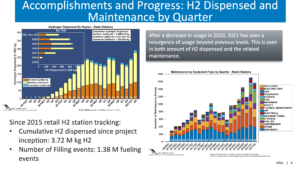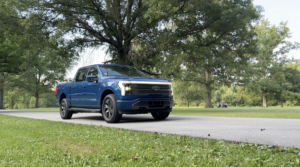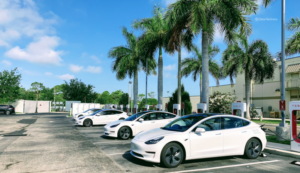There’s only so much room for solar panels. In the suburbs, almost every dwelling has its own roof, and out past the suburbs, there’s room for large solar farms. But in many cities, there’s no more room for panels. One company came up with a creative solution: build them into fences.
At first glace, putting solar cells on a fence would seem to be a bad idea, as the panels would be facing the wrong way at least half the day. To get around this issue, et-sun uses bifacial solar cells. This means that whether the sun strikes the front or the back of the panel, it generates electricity. Further, they use parallel connections so that they aren’t as affected by partial shading. Finally, the vertical orientation means less dust, snow, and other things that could block light can accumulate on the surface.
While a south-facing solar panel that gets a more ideal sun angle would be better, that takes a lot of room while a solar fence takes up room that a fence was going to take up anyway. This increases the chances of getting solar panels installed at all, so the relative inefficiency isn’t a bad thing.
There are a variety of fence types that this could be used for. Residential fences are an obvious one, but commercial fences are another good option, especially when it comes to land use. Agricultural properties could use the fences as well, and they can coexist with some types of farming. Even governments can integrate solar panels into noise barriers, so that roadways can generate electricity.
Some Questions Customers Need To Ask
If you think this kind of solar setup suits your needs, be sure to ask some of the following questions as you arrange an install or get a quote.
First off, make sure you’re only getting a bifacial solar panel when it actually needs it. A south-facing fence wouldn’t really ever get any sunlight on the north face, so that would be a waste of money. There are also situations where shade would fall on one side or the other of a fence during the morning or afternoon for an east-facing or west-facing fence, so it wouldn’t make much sense to put bifacial panels in those places, either.
You’ll also probably want to see if there are any “dummy” panels that could match a solar fence in places where it’s just not going to get any sun. If that’s not available, the portions of a fence that won’t generate power should be an aesthetic match or at least be complementary to the solar portions of the fence without spending big bucks on solar in those spots.
Finally, you’ll need to ask the contractor what kinds of vandalism or impacts the panels can withstand. If you’re using such a fence for security, it wouldn’t make sense to basically be putting up a window that thieves or others could easily defeat. In other words, the purpose of the fence needs to be a consideration beyond its power generation needs.
If you can get all of those questions answered to your satisfaction, this could be a good idea that helps expand renewable energy.
Featured image: Screenshot from et-sun.com’s solar fencing page.
Appreciate CleanTechnica’s originality? Consider becoming a CleanTechnica Member, Supporter, Technician, or Ambassador — or a patron on Patreon.

Source: https://cleantechnica.com/2021/11/12/one-more-place-solar-can-go-fences/
- Advertise
- All
- around
- barriers
- chances
- Cities
- cleantech
- Cleantech Talk
- commercial
- company
- Connections
- Contractor
- Creative
- Customers
- day
- electricity
- energy
- Expand
- Face
- facing
- farming
- Farms
- Finally
- First
- good
- Governments
- Guest
- HTTPS
- idea
- image
- IT
- large
- light
- Match
- money
- Noise
- North
- Option
- Other
- Others
- Patreon
- podcast
- power
- renewable energy
- security
- sense
- snow
- So
- solar
- solar panels
- Spending
- Strikes
- sunlight
- Surface
- us
- words








